Seeing through the fog-pinpointing young stars and their protoplanetary disks
Wednesday, 18 May 2022 04:39 Imagine walking through a dense, hazy fog in the middle of the night, seeing patches of light from cars and towns shimmering in the distance. It's nearly impossible to tell if the lights are deep in the fog or beyond it. Astronomers trying to find young stars face a similar problem: the light from stars they're hunting is shimmering through great big regions of hazy gas and dust in space, called
Imagine walking through a dense, hazy fog in the middle of the night, seeing patches of light from cars and towns shimmering in the distance. It's nearly impossible to tell if the lights are deep in the fog or beyond it. Astronomers trying to find young stars face a similar problem: the light from stars they're hunting is shimmering through great big regions of hazy gas and dust in space, called DARPA pursues tactical-grade clock that maintains precision over time
Wednesday, 18 May 2022 04:39Preparation for LizzieSat-1 Mission continues as NASA customer completes important milestone
Wednesday, 18 May 2022 04:39 Sidus Space, Inc. (NASDAQ:SIDU), a Space-as-a-Service satellite company focused on commercial satellite design, manufacture, launch, and data collection, has announced that the NASA team successfully completed their Preliminary Design Review (PDR) milestone on May 6th, 2022, to support the ASTRA project, selected under NASA's Project Polaris.
In support of NASA's Autonomous Satellite Techn
Sidus Space, Inc. (NASDAQ:SIDU), a Space-as-a-Service satellite company focused on commercial satellite design, manufacture, launch, and data collection, has announced that the NASA team successfully completed their Preliminary Design Review (PDR) milestone on May 6th, 2022, to support the ASTRA project, selected under NASA's Project Polaris.
In support of NASA's Autonomous Satellite Techn The European Innovation Council supports E.T. PACK-Fly, a project to mitigate space debris
Wednesday, 18 May 2022 04:39 The E.T.PACK-Fly consortium, coordinated by the Universidad Carlos III de Madrid (UC3M) and made up of the University of Padova, the Technical University of Dresden (TU Dresden), the Spanish company SENER Aeroespacial and the German start-up Rocket Factory Augsburg (RFA), has received euro 2.5 million from the European Innovation Council (EIC) to develop a device based on a space tether to deor
The E.T.PACK-Fly consortium, coordinated by the Universidad Carlos III de Madrid (UC3M) and made up of the University of Padova, the Technical University of Dresden (TU Dresden), the Spanish company SENER Aeroespacial and the German start-up Rocket Factory Augsburg (RFA), has received euro 2.5 million from the European Innovation Council (EIC) to develop a device based on a space tether to deor Australian Uni and SSC sign MoU to strengthen space capabilities in Australia and Sweden
Wednesday, 18 May 2022 04:39 Western Sydney University's International Centre for Neuromorphic Systems (ICNS) has signed a Memorandum of Understanding (MoU) with the Swedish Space Corporation (SSC) in a move to formalise and strengthen international space observation research partnerships and collaborations.
The MoU will facilitate the sharing of research data and analytics, and the co-location of vital space observat
Western Sydney University's International Centre for Neuromorphic Systems (ICNS) has signed a Memorandum of Understanding (MoU) with the Swedish Space Corporation (SSC) in a move to formalise and strengthen international space observation research partnerships and collaborations.
The MoU will facilitate the sharing of research data and analytics, and the co-location of vital space observat CACI announces demonstration of optical intersatellite links in low earth orbit
Wednesday, 18 May 2022 04:39 CACI International Inc (NYSE: CACI) reports it has successfully demonstrated space to space optical communications links in low earth orbit (LEO) in partnership with the Defense Advanced Research Projects Agency (DARPA) and the Space Development Agency (SDA) as part of the Mandrake II program.
Mandrake II is a joint risk-reduction program with DARPA, SDA and the Air Force Research Laborato
CACI International Inc (NYSE: CACI) reports it has successfully demonstrated space to space optical communications links in low earth orbit (LEO) in partnership with the Defense Advanced Research Projects Agency (DARPA) and the Space Development Agency (SDA) as part of the Mandrake II program.
Mandrake II is a joint risk-reduction program with DARPA, SDA and the Air Force Research Laborato Why the Space-as-a-Service Business Models are Taking the Space Sector by Storm
Wednesday, 18 May 2022 04:39 The 'Space-as-a-service', 'Satellite-as-a-service' and 'Space Data as a Service' are the newest business models of Space Industry, according to a recent report from International Defense, Security and Technology Inc (IDST). They said that the modern space industry is witnessing exponential growth in small satellite and nanosatellite areas. Nanosatellite and microsatellite refer to miniaturized s
The 'Space-as-a-service', 'Satellite-as-a-service' and 'Space Data as a Service' are the newest business models of Space Industry, according to a recent report from International Defense, Security and Technology Inc (IDST). They said that the modern space industry is witnessing exponential growth in small satellite and nanosatellite areas. Nanosatellite and microsatellite refer to miniaturized s Space Development Agency’s satellite contractors team up to deal with supply shortages
Tuesday, 17 May 2022 22:21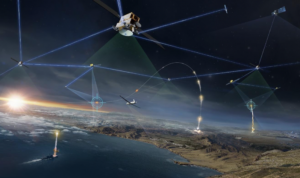
The Space Development Agency and its contractors have had to scramble to deal with parts shortages and other supply chain problems that have affected the entire space industry.
The post Space Development Agency’s satellite contractors team up to deal with supply shortages appeared first on SpaceNews.
NASA's InSight still hunting marsquakes as power levels diminish
Tuesday, 17 May 2022 20:35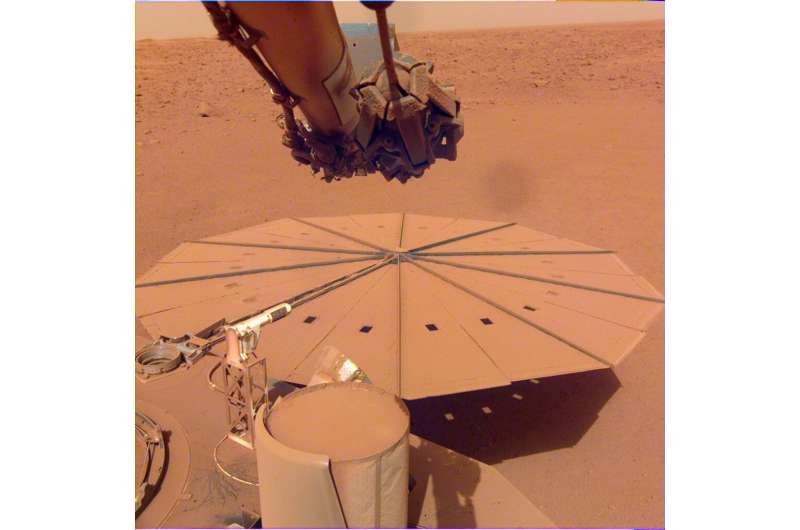
Dusty solar panels and darker skies are expected to bring the Mars lander mission to a close around the end of this year.
NASA's InSight Mars lander is gradually losing power and is anticipated to end science operations later this summer. By December, InSight's team expects the lander to have become inoperative, concluding a mission that has thus far detected more than 1,300 marsquakes—most recently, a magnitude 5 that occurred on May 4—and located quake-prone regions of the Red Planet.
The information gathered from those quakes has allowed scientists to measure the depth and composition of Mars' crust, mantle, and core. Additionally, InSight (short for Interior Exploration using Seismic Investigations, Geodesy and Heat Transport) has recorded invaluable weather data and studied remnants of Mars' ancient magnetic field.
Military experiment demonstrates intersatellite laser communications in low Earth orbit
Tuesday, 17 May 2022 20:09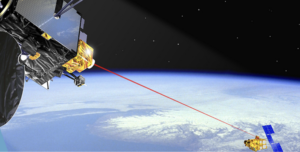
Two small satellites launched last summer by the Defense Advanced Research Projects Agency successfully established an optical link during a nearly 40-minute test.
The post Military experiment demonstrates intersatellite laser communications in low Earth orbit appeared first on SpaceNews.
Operational AST SpaceMobile satellites could proceed without prototype
Tuesday, 17 May 2022 19:37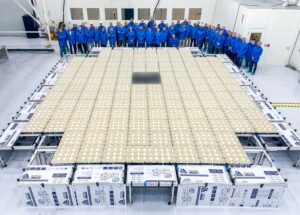
AST SpaceMobile will start deploying operational satellites in 2023 “even in the event of any complication” with the BlueWalker 3 prototype slated to launch this summer, an executive for the cellphone-compatible broadband constellation said.
NASA's InSight lander: The lonely fate of a robot on Mars
Tuesday, 17 May 2022 17:48
Covered in the red dust that sealed its fate, the NASA InSight lander is slowly shutting down, more than 250 million kilometers from home.
With its solar panels now obscured by the red planet's debris, the four-year-old robot is running out of power. One by one, its instruments are being taken offline: its robotic arm moving into "retirement pose," its seismometer likely to be turned off sometime in June.
Dr. Catherine Johnson, co-investigator on the InSight science team and professor in the department of earth, ocean and atmospheric sciences, discusses what the team discovered, what questions are left to answer, and just what will happen to the little lander that could.
What was the lander's mission and what did it find?
Foust Forward | Building a space industry in Steel City
Tuesday, 17 May 2022 16:42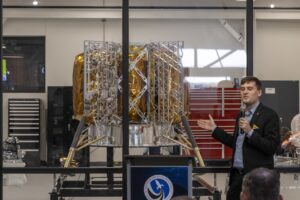
John Thornton and others want to ensure that Astrobotic isn’t the only space company in Pittsburgh or the wider region.
The post Foust Forward | Building a space industry in Steel City appeared first on SpaceNews.
DIU selects nuclear-powered spacecraft designs for 2027 demonstrations
Tuesday, 17 May 2022 13:00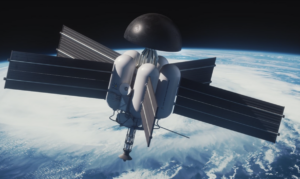
The Defense Innovation Unit announced May 17 it selected Ultra Safe Nuclear Corp. and Avalanche to develop small nuclear-powered spacecraft for in-space demonstrations planned for 2027.
The post DIU selects nuclear-powered spacecraft designs for 2027 demonstrations appeared first on SpaceNews.
Satellites key to Canada’s Arctic surveillance strategy
Tuesday, 17 May 2022 12:41
Citing a changing security climate, Canada is bolstering its defense and surveillance capabilities in the Arctic with a focus on using space assets and new technology.
The post Satellites key to Canada’s Arctic surveillance strategy appeared first on SpaceNews.

